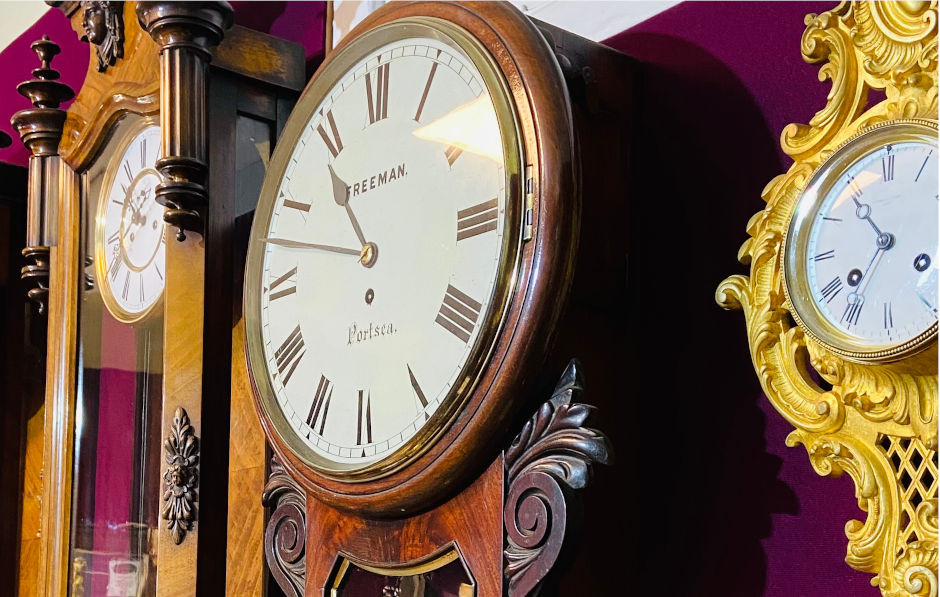
With the proliferation of antique clocks on the market, you can be forgiven for not knowing the difference between an antique clock and a great antique clock. At Hemswell Antique Centres, we are fortunate to have several clock dealers who have put together this handy guide to help you understand the different types of antique wall clock.
Named for their purpose, and dating back to the early 18th century when they started to make an appearance in public buildings as well as in the home, wall-mounted clocks make up the largest type of antique clock and are always sought after. A versatile item, the antique wall clock not only tells the time but also serves as a decorative item for the home.
Types of antique wall clocks
There is a variety of clocks that qualify as a wall clock and the following are the most popular, and have the most appeal for today’s collectors.
Antique cuckoo clocks
Dating back to the 1730s, Franz Ketterer’s creation was so called because of the sound it made when the hour was struck, to coincide with a cuckoo emerging from behind a door in the clock. Originating from the Black Forest region of Germany, early cuckoo clocks are often decorated with hunting scenes, depicting forest animals and woodland creatures.
Antique cartel clocks
An antique cartel clock is typically cartouche shaped and, unlike a wall-mounted bracket clock which rests against its bracket, will hang directly on a wall. This is due to the bracket of a cartel clock being an integral part of the clock case, rather than a separate component. French cartel clocks usually feature Roman numerals and are particularly ornate, with gold leaf decoration, cherubs, garlands and other gilt figures.
Antique banjo clocks
With an instantly recognisable shape, antique banjo clocks have an elongated top section, which stretches towards a circle. Extremely collectable today, antique banjo clocks are intricately adorned with figures, artwork and carved features.
Antique wag on the wall clocks
Popular during the 19th century, antique wag on the wall clocks are English in origin. Their distinctive appearance stems from the clock weights and pendulums hanging, exposed, below the clock, rather than being enclosed in a case. Over time, many owners enclosed their clocks in a case.
Antique mission clocks
Antique mission clocks are authentic to the Arts & Crafts movement of the late 19th century. Often manufactured from oak, the mission style is a simple one with clean, square lines and panels serving to highlight the grain of the wood.
Antique wall clock value
When considering an antique wall clock, as with other areas of antique collectables, there are factors that will determine the value. These include:
Condition – obviously, the better the condition, the higher the value, so ensure first of all that there are no missing parts. Look too for chips or scratches and do not focus on the exterior alone – check the clock movement, to see if all springs and weights are functioning correctly.
Restoration – any restoration that has been carried out must be sympathetic, so look for tell tale signs including extensive repainting, particularly of numerals.
Makers’ marks - look for the name of the clockmaker which will appear somewhere on the clock. The name could be engraved, stamped or printed and places to look include the centre or edge of the clock face, on the backplate and on the inside of the clock case. Be aware that on some later clocks, the name may not be the clock maker but the retailer who sold the timepiece originally.
Antique wall clocks for sale
At Hemswell, our established dealers, many of whom are members of Lapada (The Association of Art and Antique Dealers) have the knowledge and experience vital to collectors. They can be trusted to know how original a piece is and whether it has been restored, facts that are essential to the novice collector particularly. Our website has a selection of antique clocks with some fine examples of antique wall clocks, and of course we welcome visitors to visit our centres in person, to browse the wares of over 300 dealers.